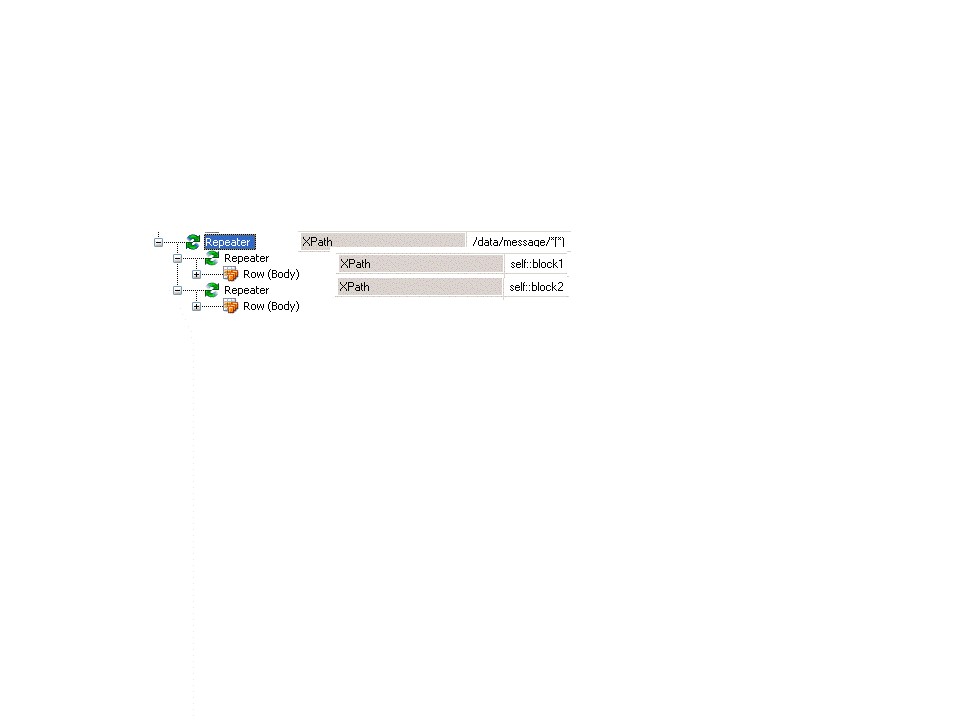block1
block1
block2
block2
block1
By using a nested repeater construction with wildcard selection and self axis filtering (the axis referring to the current node), you can obtain a data-driven behavior:
|
Figure 40
|
The first child repeater selects the current block if it is a block1 instance, that is the first two instances and the last instance .

